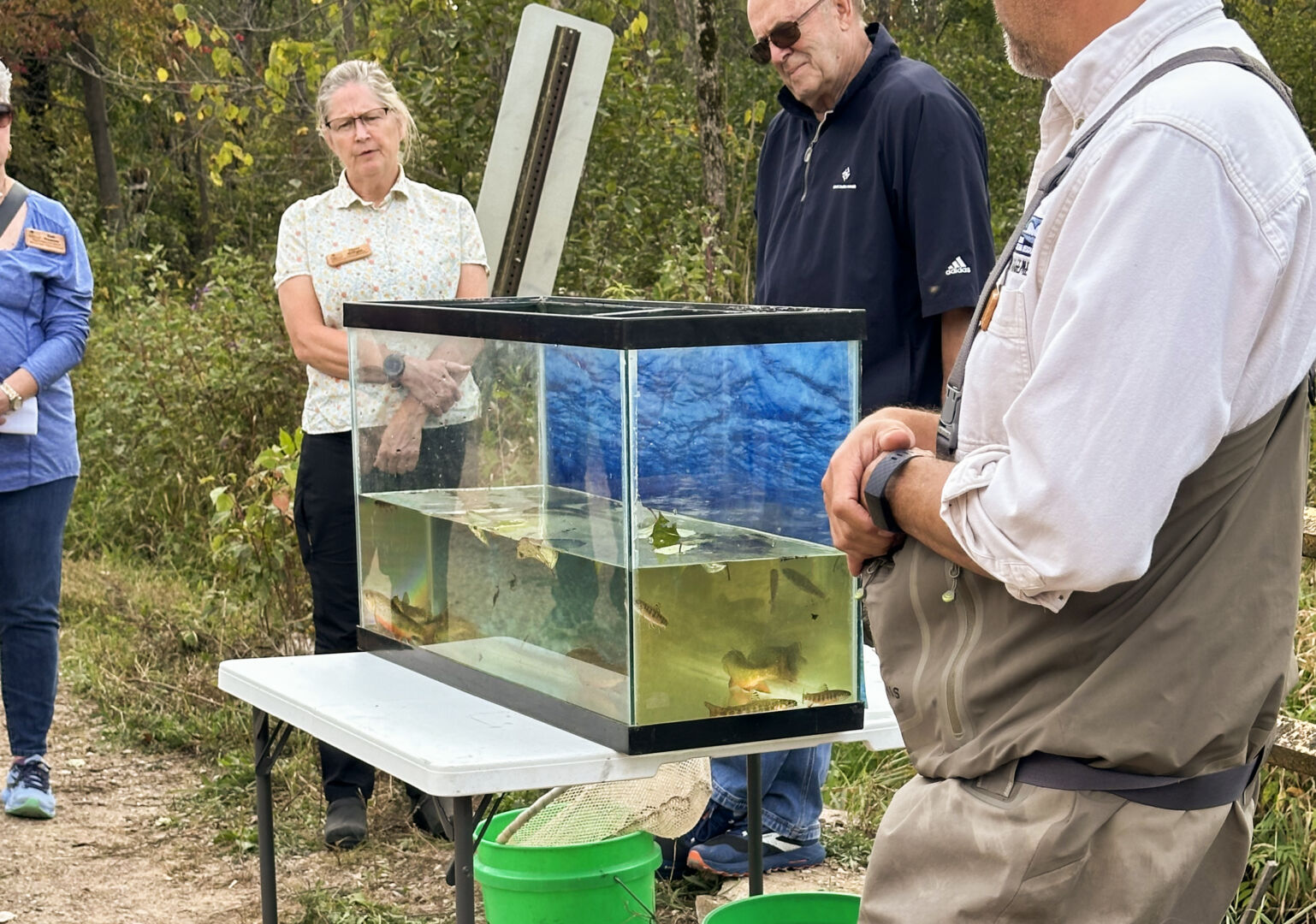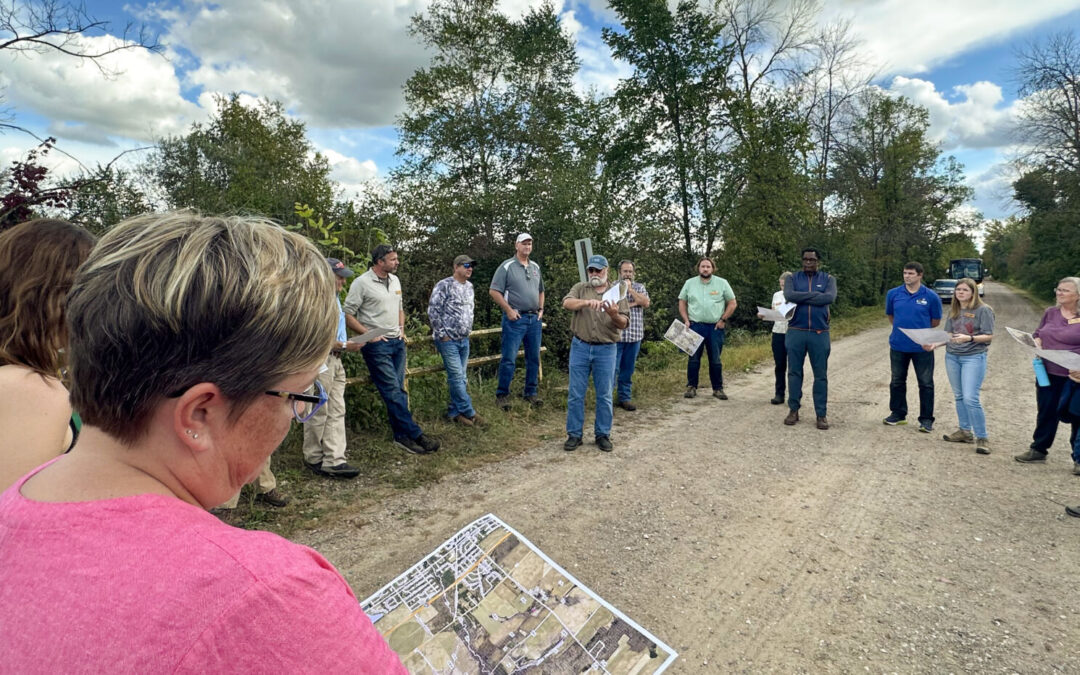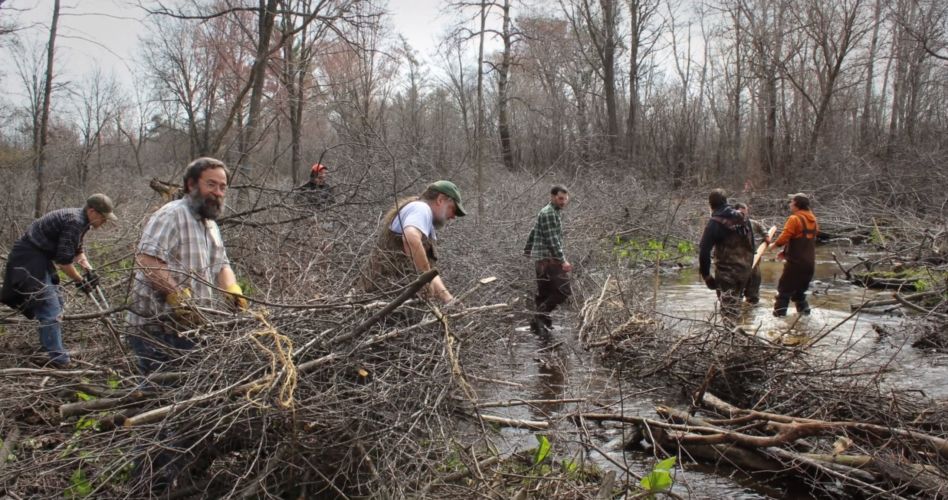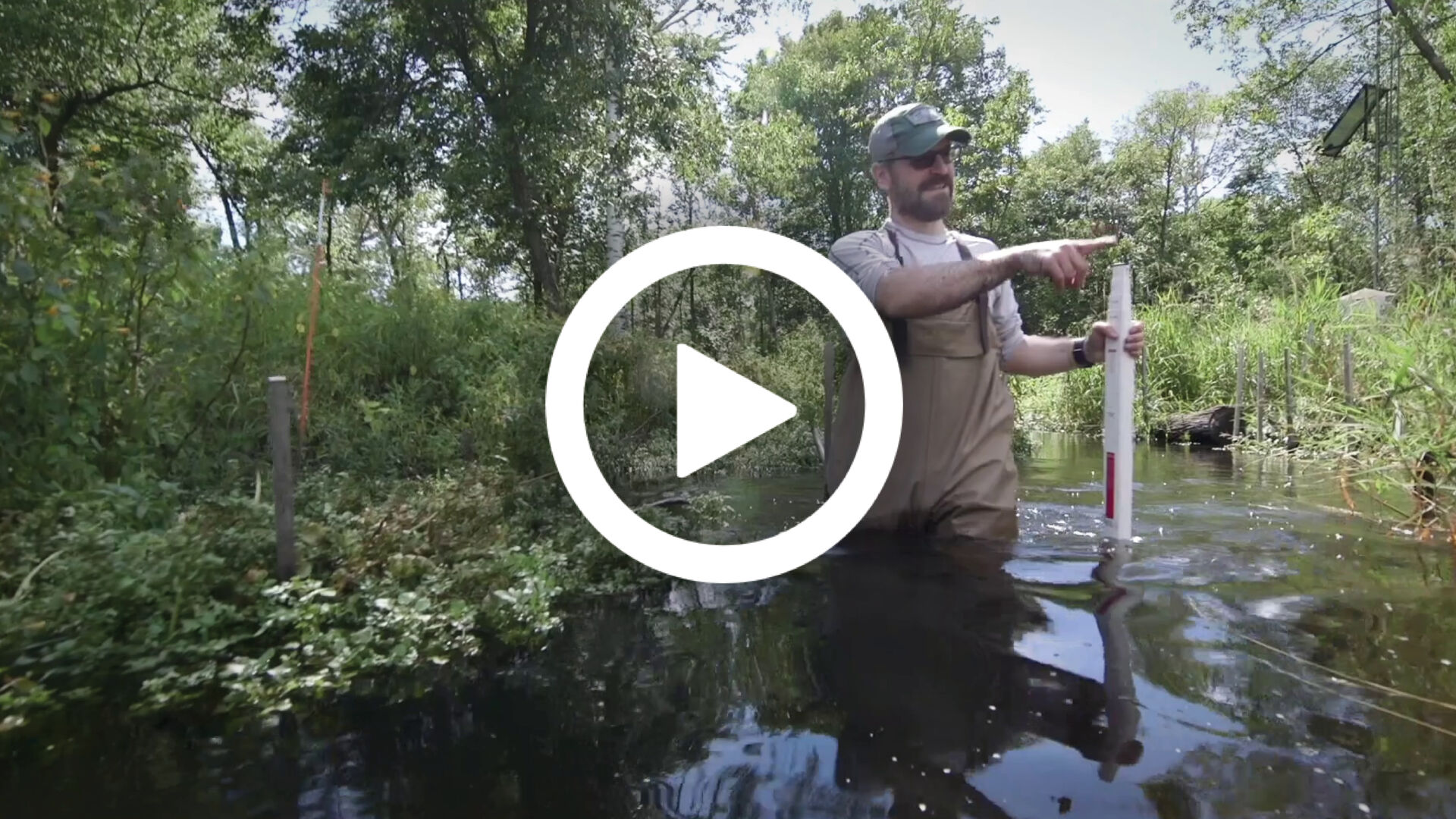Last week, the Wisconsin Wetlands Association (WWA), Village of Plover, UW-Stevens Point College of Natural Resources, and area agricultural producers led a tour of the Little Plover River Watershed Enhancement Project (LPRWEP) for the seven-member Wisconsin Natural Resources Board. The Governor-appointed board plays a key role in setting policy for the Department of Natural Resources.
As part of their September meeting in Plover, the Natural Resources Board met onsite at the Little Plover River and visited project sites that are serving to restore hydrology in the river’s headwaters.
Members of the LPRWEP, including WWA, were on hand to describe the diverse partnership that is working together to improve the health of the Little Plover River.
“The success story of the LPRWEP isn’t that one single action is solving this problem, but many diverse and voluntary actions are making a difference,” said WWA Executive Director Tracy Hames. “And now, lots of people want to be part of this joint effort.”
Project partners described how multiple ditch fills, wetland restoration, forest management, floodplain reconnection, strategic irrigated acreage retirement, and municipal and agricultural water conservation efforts are cumulatively improving upper watershed conditions and downstream river health.

Fisheries staff from the WDNR showcase some examples of the trout that can be found in the Little Plover River.
Department of Natural Resources fisheries staff also shared information about the Little Plover River as a Class 1 native brook trout stream. The population of brook trout in the Little Plover River is among the best in the state. This is testimony to the value of this community-based watershed approach.
The LPRWEP began in 2017 as a voluntary effort to have positive long-term impacts on water resource management within the Little Plover River Watershed—for fish, wildlife, and people. At a time when controversy and conflict were polarizing the community, this project focused on what could be accomplished by working together.
This public-private community-based partnership is showing strong results—and this is just the beginning.
Related content
What is the Little Plover River Watershed Enhancement Project?
Learn more about the project partners and goals of the LPRWEP in this blog post from 2020.
From the Director: Working toward a big vision, one project at a time
Video: Enhancing the Little Plover River Watershed




